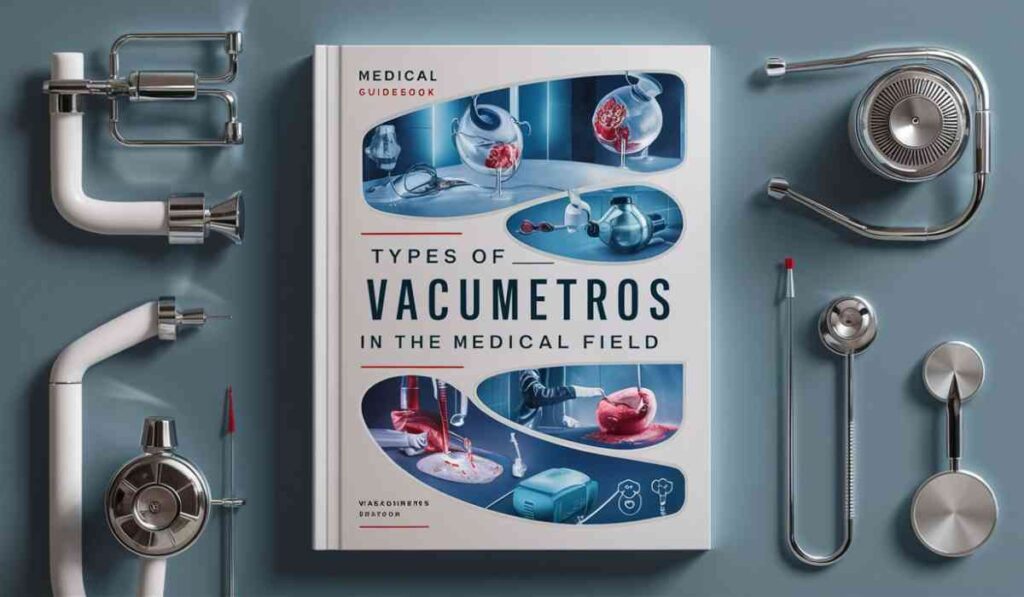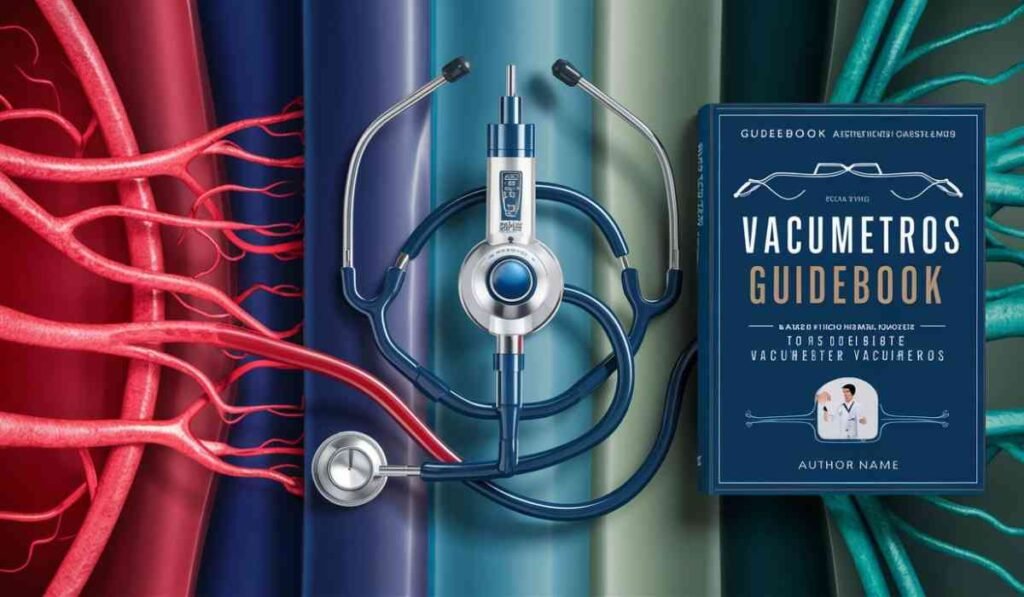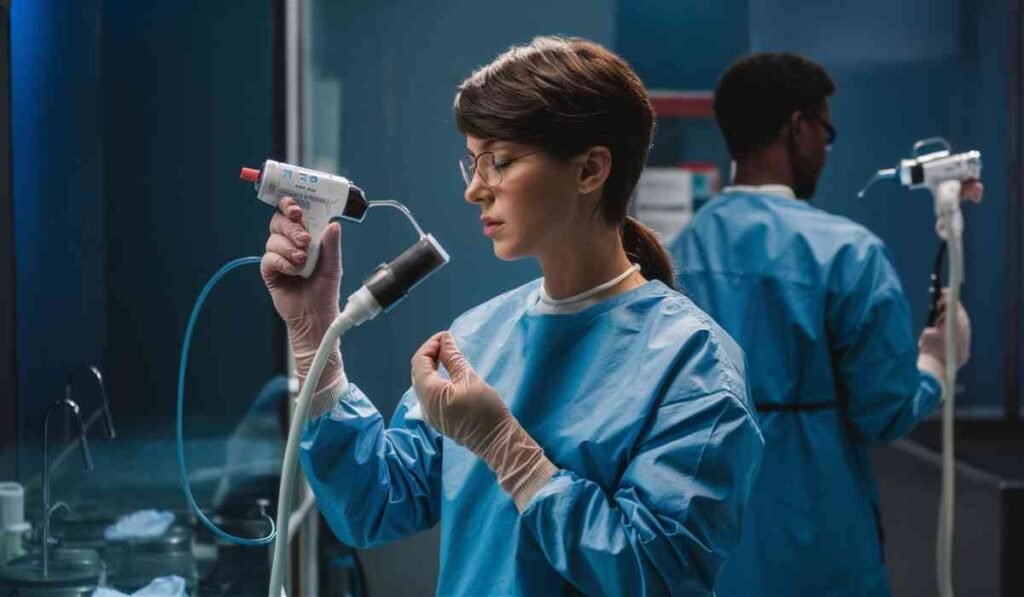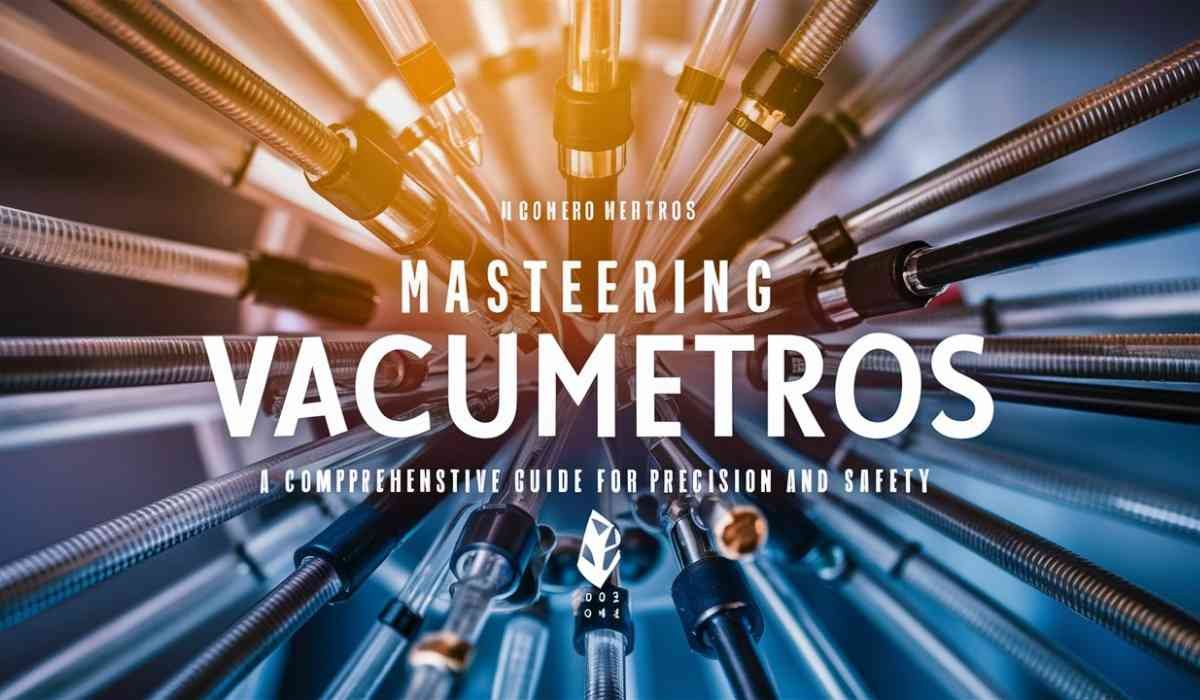In the complex and precision-driven world of modern industries, vacumetros play an indispensable role.
These devices are crucial for measuring vacuum levels, ensuring that processes are carried out under optimal conditions.
Whether you are in the pharmaceutical industry, semiconductor manufacturing, automotive sector, or academic research, accurate vacuum measurements are essential for efficiency, safety, and quality control.
This comprehensive guide aims to provide valuable insights into vacumetros, covering their types, applications, safety protocols, maintenance, and future trends.
Understanding Vacumetros
Definition And Working Principles
Vacumetros, or vacuum gauges, are instruments used to measure the pressure in a vacuum system.
They operate by determining the degree of vacuum within a space, which is critical for controlling and optimizing various industrial processes.
The working principle of vacumetros varies depending on the type, but all aim to measure the absolute pressure of a vacuum environment.
Types Of Vacumetros

High Vacuum Gauges
- Functionality: Measure very low pressures in high vacuum systems.
- Applications: Primarily used in semiconductor manufacturing and scientific research.
- Ideal Usage: Environments requiring extremely low pressures to operate effectively.
Inverted Oil Gauges
- Functionality: Utilize a column of oil to measure vacuum pressure.
- Applications: Common in laboratory settings for medium vacuum measurements.
- Ideal Usage: Situations where a visual indication of pressure is beneficial.
Mechanical Gauges
- Functionality: Use mechanical components to measure vacuum levels.
- Applications: Industrial settings where robust and durable equipment is needed.
- Ideal Usage: Environments with moderate vacuum requirements.
Cold And Hot Cathode Ionization Gauges
- Functionality: Ionize gas molecules to measure vacuum pressure.
- Applications: High and ultra-high vacuum environments.
- Ideal Usage: Situations requiring precise and high-range vacuum measurements.
Capacitance Diaphragm Gauges
- Functionality: Measure changes in capacitance caused by diaphragm deflection.
- Applications: Pharmaceutical manufacturing and research laboratories.
- Ideal Usage: Situations requiring stable and accurate pressure measurements.
Pirani Gauges
- Functionality: Measure vacuum pressure based on thermal conductivity changes.
- Applications: General vacuum applications in various industries.
- Ideal Usage: Environments where quick and reliable measurements are needed.
Applications Of Vacumetros

Semiconductor Industry
Vacumetros are critical in the semiconductor industry, where precise vacuum environments are necessary for integrated circuit fabrication.
Accurate vacuum measurements ensure the integrity and performance of semiconductor devices.
Pharmaceutical Manufacturing
In pharmaceutical manufacturing, vacumetros help maintain quality control and potency preservation.
They ensure that manufacturing processes occur under optimal vacuum conditions, preventing contamination and ensuring product efficacy.
Research Laboratories And Universities
Vacumetros facilitate scientific experiments and studies by providing accurate vacuum measurements.
They are essential tools in research laboratories and universities, enabling researchers to conduct experiments under controlled conditions.
Aerospace And Automotive Sectors
In aerospace and automotive sectors, vacumetros help maintain the integrity and performance of critical components and systems.
Accurate vacuum measurements are crucial for ensuring the reliability and safety of these components.
Real-World Examples And Case Studies
Numerous real-world examples and case studies highlight the importance and impact of vacumetros in various industries.
For instance, in a semiconductor manufacturing facility, vacumetros helped optimize the vacuum environment, resulting in a 20% increase in production efficiency.
Similarly, in a pharmaceutical manufacturing plant, vacumetros ensured consistent product quality, leading to a 15% reduction in product recalls.
Best Practices And Safety Protocols
Importance Of Following Safety Protocols
Operating vacumetros requires adherence to strict safety protocols to protect personnel and equipment.
Understanding and mitigating common hazards associated with vacuum systems are essential for safe operation.
Safety Measures
- Proper Ventilation: Ensure adequate ventilation to prevent the accumulation of hazardous gases.
- Regular Equipment Inspection: Conduct routine inspections to identify and address potential issues.
- Training and Competency: Ensure personnel are adequately trained and competent in operating vacumetros.
- Safe Handling of Chemicals: Follow proper procedures for handling and storing chemicals used in vacuum systems.
- Emergency Procedures: Establish and communicate clear emergency procedures to handle potential incidents.
Proper Calibration And Maintenance

Importance Of Regular Calibration
Regular calibration is essential for accurate measurements. Calibrating vacumetros ensures that they provide reliable readings, which are critical for process optimization and quality control.
Step-by-Step Calibration Guide
- Gather Calibration Equipment: Ensure you have the necessary calibration standards and tools.
- Follow Manufacturer Guidelines: Adhere to the calibration procedures specified by the vacumetro manufacturer.
- Perform Calibration: Adjust the vacumetro to match the calibration standard.
- Document Results: Record calibration data for future reference and compliance purposes.
Recommended Maintenance Practices
- Regular Cleaning: Keep vacumetros clean to prevent contamination and ensure accurate readings.
- Proper Storage and Handling: Store vacumetros in a controlled environment to prevent damage.
- Periodic Inspections: Conduct regular inspections to identify and address potential issues.
- Software Updates: Keep vacumetro software up to date to benefit from the latest features and improvements.
- External Calibration by Professionals: Periodically send vacumetros to professional calibration services for thorough calibration and maintenance.
Future Trends And Advancements

Emerging Technologies In Vacuum Measurement
Advancements in vacuum measurement technology are continually emerging. Laser-based sensors and MEMS (Micro-Electro-Mechanical Systems) technology are among the latest innovations improving vacumetro accuracy and performance.
Integration Of IoT Capabilities
The integration of IoT (Internet of Things) capabilities into vacumetros allows for remote monitoring and predictive maintenance.
This technology enables real-time data collection and analysis, improving efficiency and reducing downtime.
Potential Advancements In Accuracy And Precision
Future advancements in accuracy and precision include quantum-based sensors and innovative calibration techniques.
These technologies promise to set new standards in vacuum measurement, enhancing industry practices and efficiency.
Conclusion
Vacumetros are indispensable tools across various industries, ensuring efficiency, safety, and quality control.
By understanding their types, applications, safety protocols, and maintenance practices, professionals can master the use of vacumetros and stay ahead of the competition.
Investing in reliable vacumetros and staying informed about future trends will enhance business operations and productivity.
Are you ready to elevate your vacuum measurement capabilities? Explore our range of vacumetros and start mastering precision and safety today!
FAQs (Frequently Asked Questions)
What are the different types of vacuometers?
Common types include Pirani gauges (general applications) and high vacuum gauges (chip manufacturing).
Why is calibration important for vacuometers?
Calibration ensures accurate readings, vital for process control and quality.
Safety first! What’s crucial when using vacuometers?
Proper ventilation and trained personnel are key.
How do vacuometers benefit pharmaceuticals?
They ensure quality control and product potency during manufacturing.
What’s new in vacuum measurement tech?
MEMS technology and IoT integration are emerging trends.




